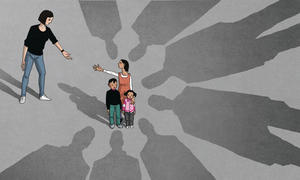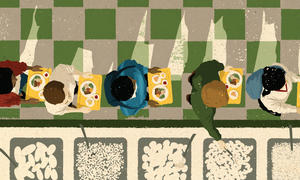article
3,356 Results
article
Discipline That Works
Earlier this month, hundreds of educators, parents and students gathered at the Educating Youth of Color Summit in Colorado Springs, Colo. That the state’s 4th Judicial District sponsored the event was no accident.
article
“Playing Black” for Laughs
Costumes and makeup aren’t the only markers for cultural appropriation. Dr. Neal Lester explains the prevalence of—and problems with—“figurative blackface.”
text
Literature
Raised By Women
In her poem, Kelly Norman Ellis brings to life a vivid picture of the kind of women she was surrounded and brought up by during her childhood in Mississippi. The poem's speaker takes you down south and makes you feel like a guest at the kitchen table by way of her descriptions.
January 5, 2015
article
Toolkit for “Is My School Racist?”
An important step in gauging attitudes toward race in your school is assessing school climate. School climate questionnaires can be used to: uncover differences in teacher and student perceptions; open professional
text
Literature
On Liberty and Slavery
The first Black Southerner to have a book of poetry published, Horton's plea for freedom personifies liberty and beseeches her to stamp out oppression and break his chains.
July 7, 2014
article
Toolkit for "Immigrant and Refugee Children: A Guide for Educators and School Support Staff"

Support and affirm your immigrant students with these resources.
article
Toolkit for “Buttoned Down”
Students, parents and administrators have hotly debated the issue of school uniforms for decades. Proponents of school uniforms believe that they save money, prevent violence, alleviate social pressures and improve
article
Books Help Open Talks About LGBT Issues
One reason there are so many incidences of anti-gay bullying is a simple lack of understanding. Introducing kids to LGBT topics at an early age, in a comfortable and open environment, rather than allowing them to discover the subject at a later age where they may also pick up prejudicial and inaccurate information can help prevent such violence. This approach can also help LGBT children–or those with LGBT family members—feel safer and more accepted within the classroom.
